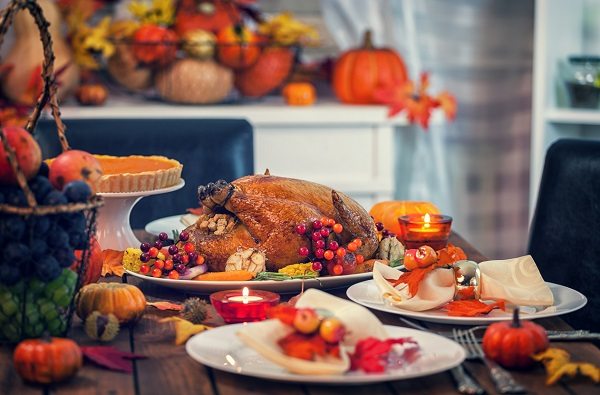If you’re feeding the masses this Christmas, you’ll want everything to go without a hitch – and you certainly don’t want a dose of food poisoning. Poultry like turkey, duck or goose can carry bacteria that can cause food poisoning. Cooking them thoroughly will kill this bacteria, but there is still plenty of opportunity to spread the bacteria when storing and preparing. Follow these tips from SafeFood to ensure everyone stays safe this Christmas:
Storage
- If you are using a fresh turkey, place it on a deep plate or dish to catch any juices and keep it covered.
- Store the turkey on the bottom shelf of the fridge until ready to start cooking.
Defrosting
- If you are using a frozen turkey, make sure it is completely defrosted before you start to roast it.
- The safest way to defrost your turkey is on the bottom shelf of the fridge, on a plate or a tray. Do not thaw the turkey in cold water.
- It will take at least 24 hours to defrost every 2-2.5 kgs of turkey. Make sure you check the weight on the label and give yourself enough time. It can take up to three days to defrost a frozen 7.5 kg turkey!
- You’ll know the turkey is completely thawed when the body is soft, the legs can be moved, and there are no ice crystals in the cavity.
Handling
- Do not wash your turkey because bacteria may be splashed over the work surfaces of your kitchen or to other foods.
- After you have prepared the turkey, clean the work surfaces thoroughly using detergent and warm water.
- Wash your hands thoroughly after handling any raw poultry.
Cooking
- Make sure frozen turkeys are completely defrosted before roasting. Remove the giblets and keep them for making gravy.
- If you have an electric fan-assisted oven you can safely stuff the body cavity of the turkey. The stuffing should weigh no more than 10 per cent of the weight of the bird and be loosely packed in the body cavity. If you have any other type of oven, SafeFood recommends that you cook your stuffing in a separate oven-proof dish.
- Follow the cooking time carefully for your size of turkey and remember to increase the time if your bird is stuffed. See www.safefood.eu for more details on cooking times.
- Cover your bird loosely with foil while cooking, and remove for the final 30 minutes if you want it to brown more.
- Before serving, make sure your turkey is piping hot all the way through with no pink meat left.
- Pierce the thickest part of the thigh and breast with a clean fork or skewer. The juices should run clear.
- If your turkey is stuffed, the centre of the stuffing should be piping hot. This is the slowest part of a stuffed bird to cook.
- For the tastiest and juiciest turkey, cover the bird with foil and leave for half an hour before carving.
What about the leftovers?
Leftover turkey and ham should be covered and stored in the fridge within two hours of cooking. You can help it cool down by cutting it into smaller pieces. Once refrigerated, it should be eaten within three days. If you want to freeze stuffing or Christmas meats, wrap them in heavy freezer wrap and put in a container suitable for your freezer.
When reheating Christmas leftovers, turkey and stuffing should be reheated until they are piping hot all the way through. Food should never be reheated more than once and leftover gravy should be brought to a rolling boil.









